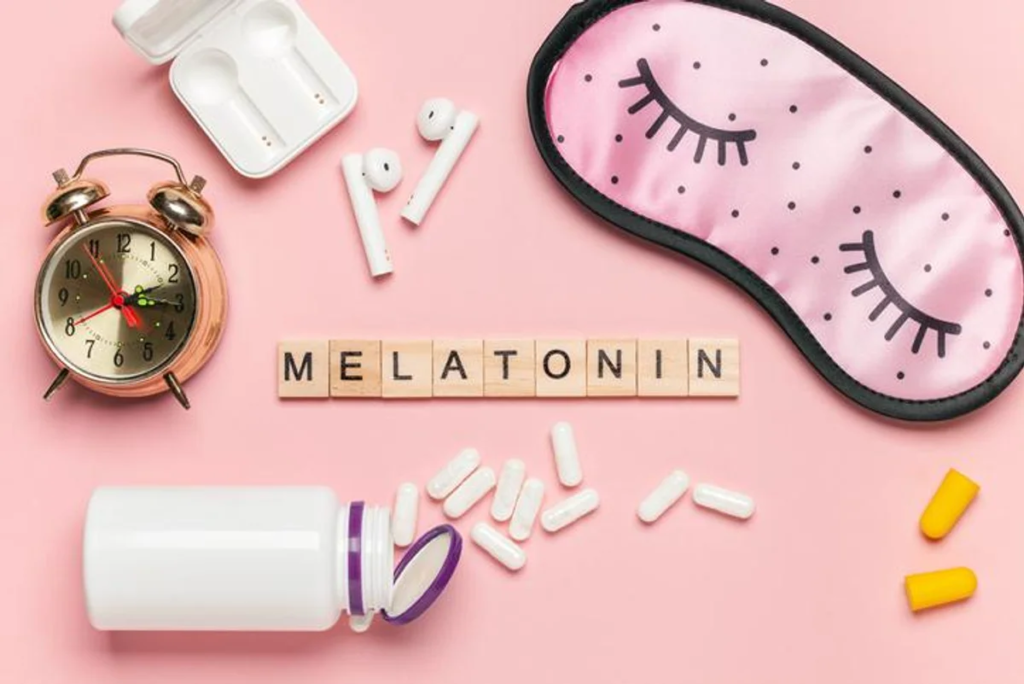
As melatonin supplements become more widely used, there’s a growing need for additional research on its long-term safety in children. Current studies have not conclusively addressed the impact of prolonged melatonin use, which raises questions about its role in children’s growth and development.
The Council for Responsible Nutrition (CRN), a leading trade association for dietary supplements and functional foods, has announced that manufacturers of melatonin supplements will have 18 to 24 months to voluntarily introduce child-deterrent packaging and enhance cautionary language on their product labels.
These changes come in response to an increasing demand for melatonin and troubling reports about children’s access to these supplements.
Melatonin and Safety
Melatonin is a hormone naturally produced by the brain in response to darkness. It plays a key role in regulating the body’s sleep-wake cycle, also known as the circadian rhythm. However, as an over-the-counter supplement, melatonin is not subject to approval by the U.S. Food and Drug Administration (FDA) for safety, effectiveness, or labeling before reaching the market. Despite this, the popularity of melatonin supplements has surged over the past decade, leading to a variety of products with inconsistent ingredients and dosages.
Recent studies and reports have highlighted alarming issues with melatonin products. An April 2023 study found that some melatonin gummies contained significantly higher levels of the hormone than indicated on their labels. In one case, a product had up to 347% more melatonin than stated, while another contained no melatonin at all but was instead composed of cannabidiol (CBD). These discrepancies pose potential risks to consumers, particularly children.
Melatonin Usage with Children
A report from the U.S. Centers for Disease Control and Prevention (CDC) in March 2024 found that between 2019 and 2022, approximately 11,000 children visited emergency rooms after ingesting melatonin unsupervised. Nearly half of these cases involved melatonin gummies, with children between the ages of 3 and 5 most affected. Although most incidents didn’t result in hospitalization, the numbers are concerning, especially since many cases involved children opening bottles that weren’t properly secured.
When considering melatonin for your child, it’s best to start with the lowest possible dose. Many children respond to a small amount, typically 0.5 mg to 1 mg, taken 30 to 90 minutes before bedtime. This dosage often proves effective in helping children fall asleep. Most children, even those with ADHD, generally don’t need more than 3 to 6 mg of melatonin to experience benefits.
Before giving melatonin to your child, it’s essential to talk to your pediatrician. They can guide you on the appropriate dosage and timing based on your child’s age, health, and specific sleep concerns. Keep in mind that melatonin should complement, not replace, a consistent bedtime routine. Establishing good sleep habits, such as setting a regular bedtime, reducing screen time, and creating a calming environment, is crucial for healthy sleep.
While short-term use of melatonin in children appears relatively safe, less is known about its long-term effects. Researchers are particularly interested in how melatonin might influence growth and development during puberty. Additionally, some common side effects, such as morning sleepiness, drowsiness, and increased urination at night, may occur with melatonin use.
Melatonin can also interact with other medications, which is why consulting your pediatrician is crucial. Parents should be cautious about self-prescribing melatonin without professional advice, as the potential for unintended effects or drug interactions is a valid concern.
Changing the Guidelines
In response to these safety concerns, the CRN’s guidelines call for improved labeling and child-resistant packaging for melatonin gummies and chewable tablets. These guidelines emphasize the need to warn consumers about the dangers of drowsiness after taking melatonin and caution against combining it with alcohol. Additionally, labels should note that melatonin is intended for intermittent or occasional use only.
The guidelines also highlight the need for additional warnings on melatonin gummies, including potential choking hazards for children under 4 years old if not chewed properly. Manufacturers are encouraged to adopt child-resistant packaging to reduce the risk of accidental ingestion.
Manufacturers of melatonin gummies have 24 months to implement these changes, but the CRN urges the industry to act sooner to protect public safety. The adoption of child-deterrent packaging and clear labeling could help prevent further incidents and ensure consumers are better informed about the risks associated with melatonin use.
Melatonin can be a helpful tool for parents seeking to improve their child’s sleep, but it must be used with care. Start with a low dose, consult your pediatrician, and maintain a consistent bedtime routine. Parents and caregivers should ensure that melatonin products are stored safely and out of reach of children, and always follow label instructions for proper use.
If you are facing challenges with your children’s sleep quality, consult your pediatrician to see if a sleep study would be an appropriate next step. The Alaska Sleep Clinic offers free consultations.










